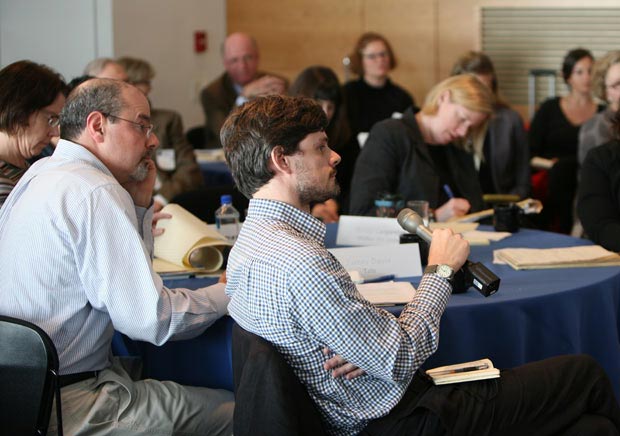
Vase of Flowers, Jan Davidsz de Heem, c. 1660. Oil on canvas, 27 3/8 x 22 1/4 in. Photo courtesy of the Board of Trustees, National Gallery of Art, Washington
The scholarly catalogue has long been a critical part of a museum’s mission, providing authoritative information about collection objects for scholars, students, and the general public. Richly illustrated and often based on years of painstaking research, print catalogues form one of the building blocks of art historical research.
A few weeks ago, the Getty Foundation hosted a two-day convening of eight institutions, along with the J. Paul Getty Museum, on developing online scholarly art catalogues. The institutions involved received grants as part of the Foundation’s Online Scholarly Catalogue initiative, which aims to help arts institutions to produce free online resources that will facilitate access to and knowledge about their collections for the academic community.
Scholarly catalogues of a museum’s permanent collection are a crucial art historical source, but are costly to produce and purchase. Making this important information accessible on the Web will encourage continued scholarship and a greater awareness of collections, and will facilitate increased collaboration across institutions.
It was fascinating for me, as a young scholar, to see key institutions working through what it means for a museum to publish a catalogue online, to sort through the practical steps involved in doing so, and to debate the kinds of information and access that would be most useful to researchers.

Participants at an Online Scholarly Catalogue Initiative convening
Beyond making the basic data about an institution’s holdings available, the technological features available online offer many benefits over the printed catalogue—including the ability to quickly and effectively search; the inclusion of multimedia components like recorded interviews and video documentaries; the possibility of showing more images, including technical imagery such as x-rays and IR scans; and the addition of links to related materials like conservation reports, exhibition history and installation photographs. The dynamic possibilities of navigating a web resource also encourage serendipitous findings and exposure to new artworks.
The institutions are currently in the process of planning initial projects, which will then serve as a platform for continued work. The projects are diverse and ambitious, ranging from cataloging over a thousand Japanese books to providing an in-depth look at a single artist.
The National Gallery of Art in Washington, D.C., one of the participants in the OSC initiative, will tackle how to adapt and update its existing print catalogue of the 17th-century Dutch paintings collection for online publication. The catalogue will also include new audio and video components.
SFMOMA has chosen to focus on Robert Rauschenberg because of its significant holdings of his work. Their team is gathering together curatorial essays, conservation documentation, audio interviews, and related materials into a single online resource.
This is an exciting moment for museum publishing, and the possibilities remain open for new and innovative ideas. I expect to see, and look forward to using, more of these resources in the near future.




Comments on this post are now closed.